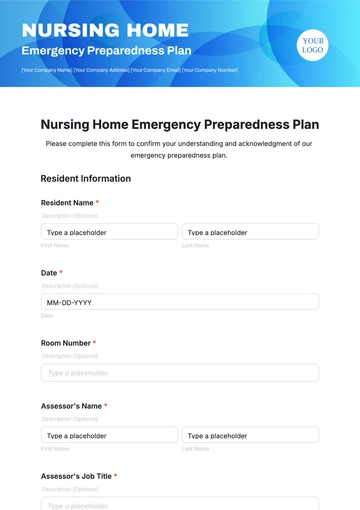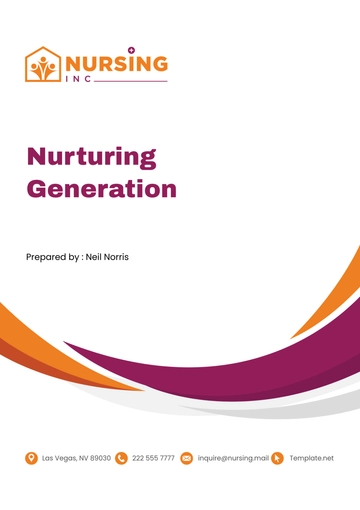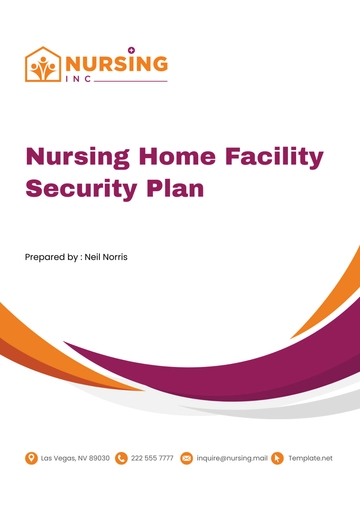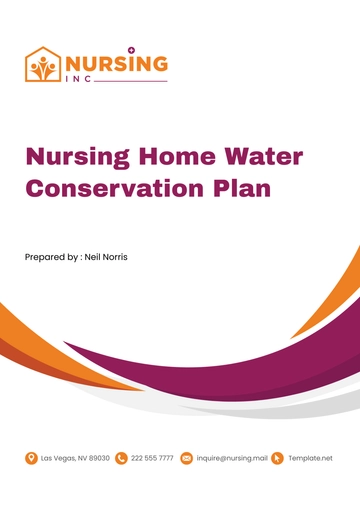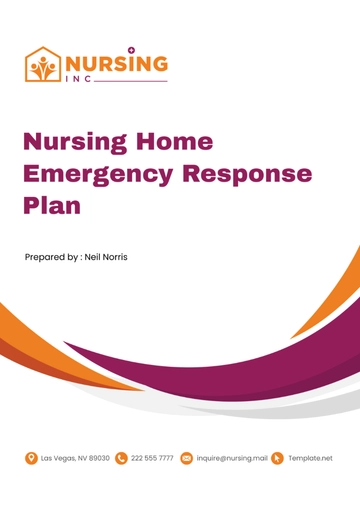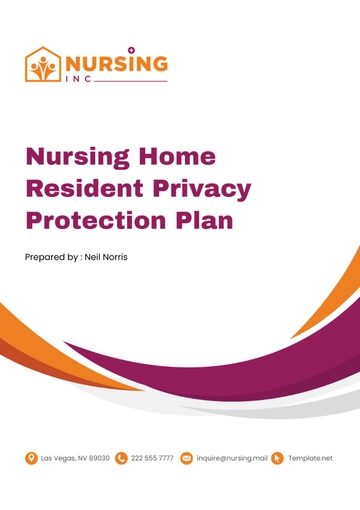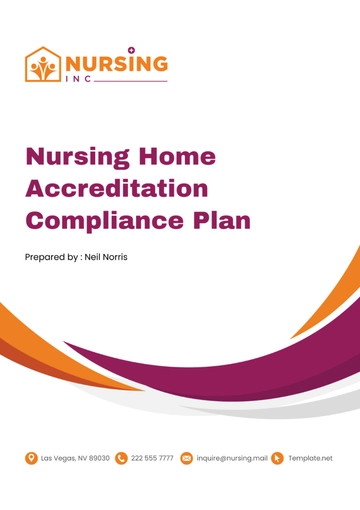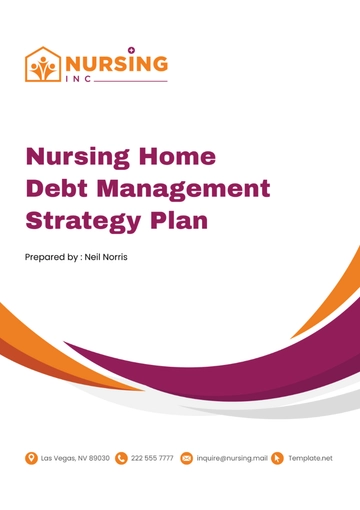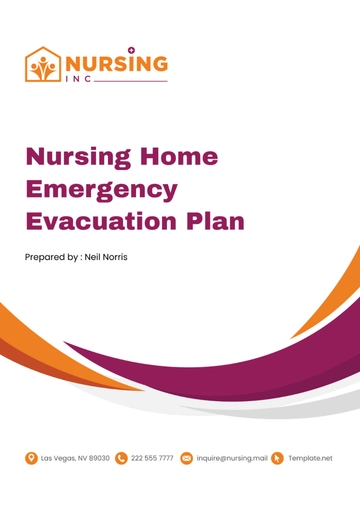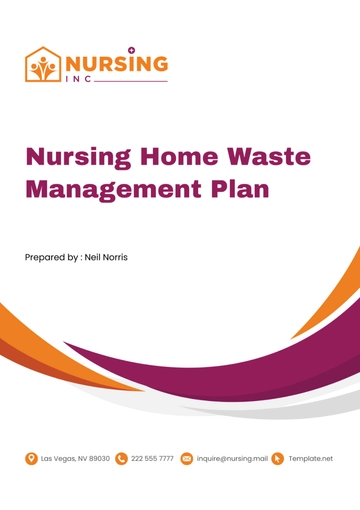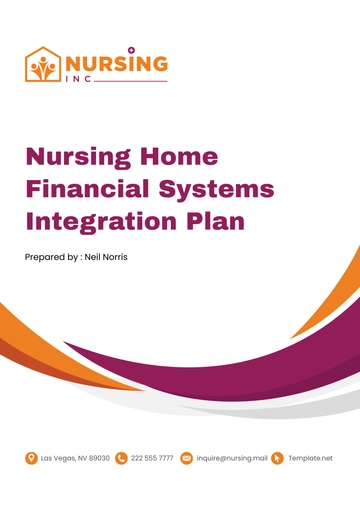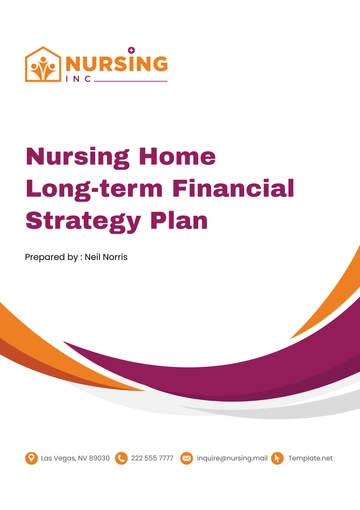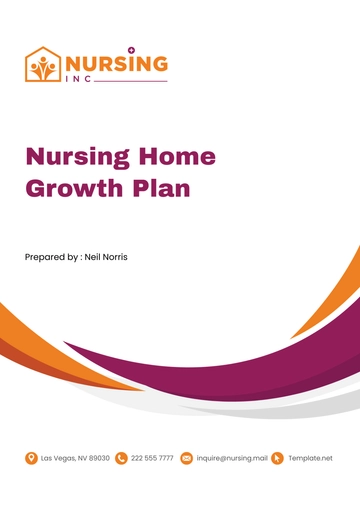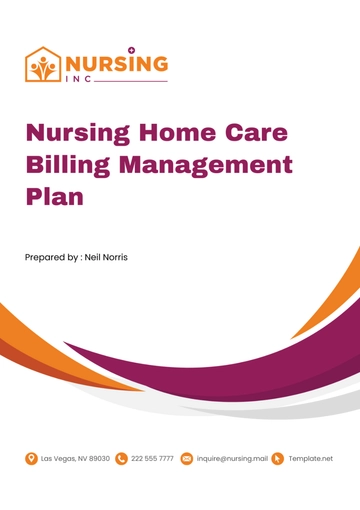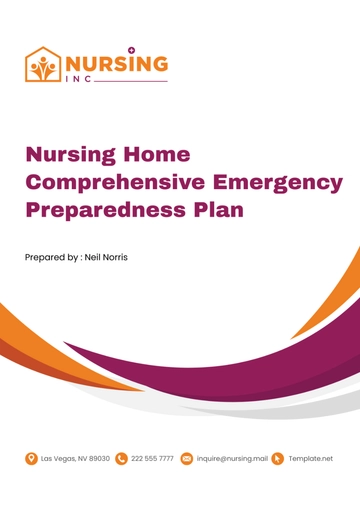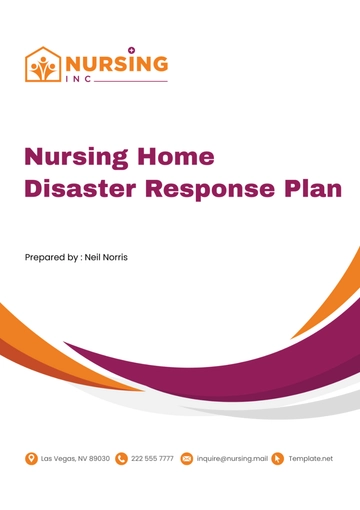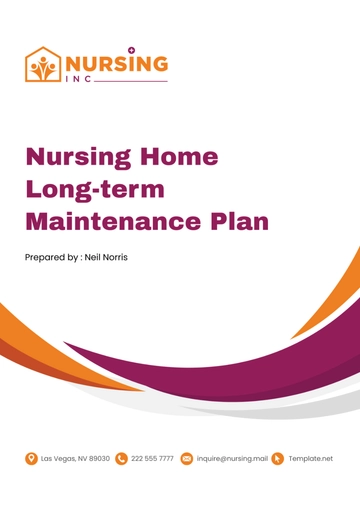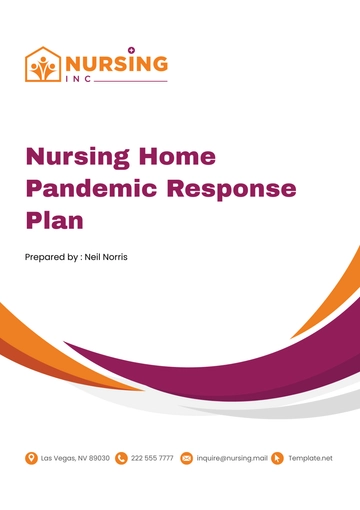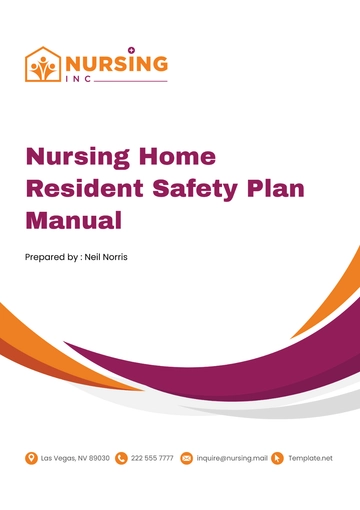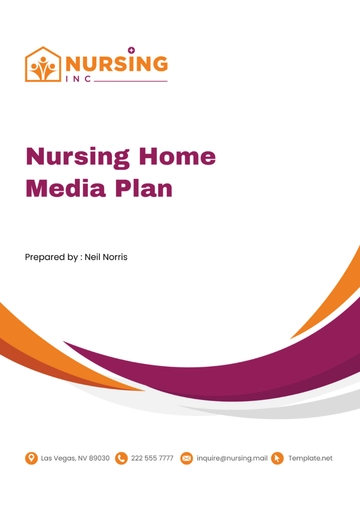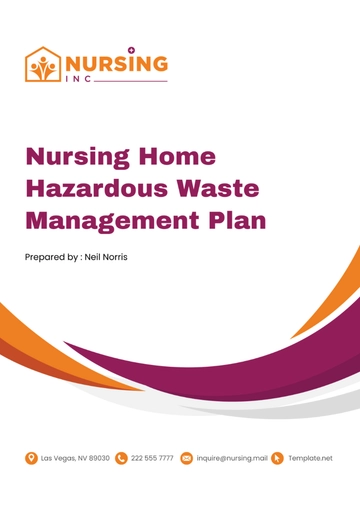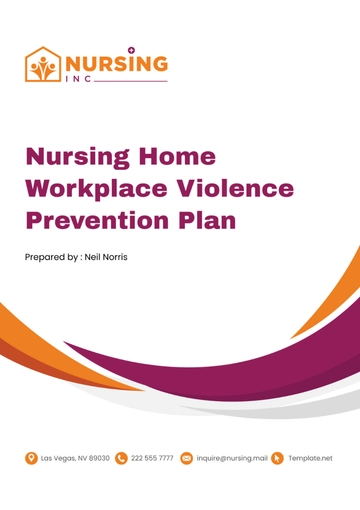Free Nursing Home Evacuation Plan
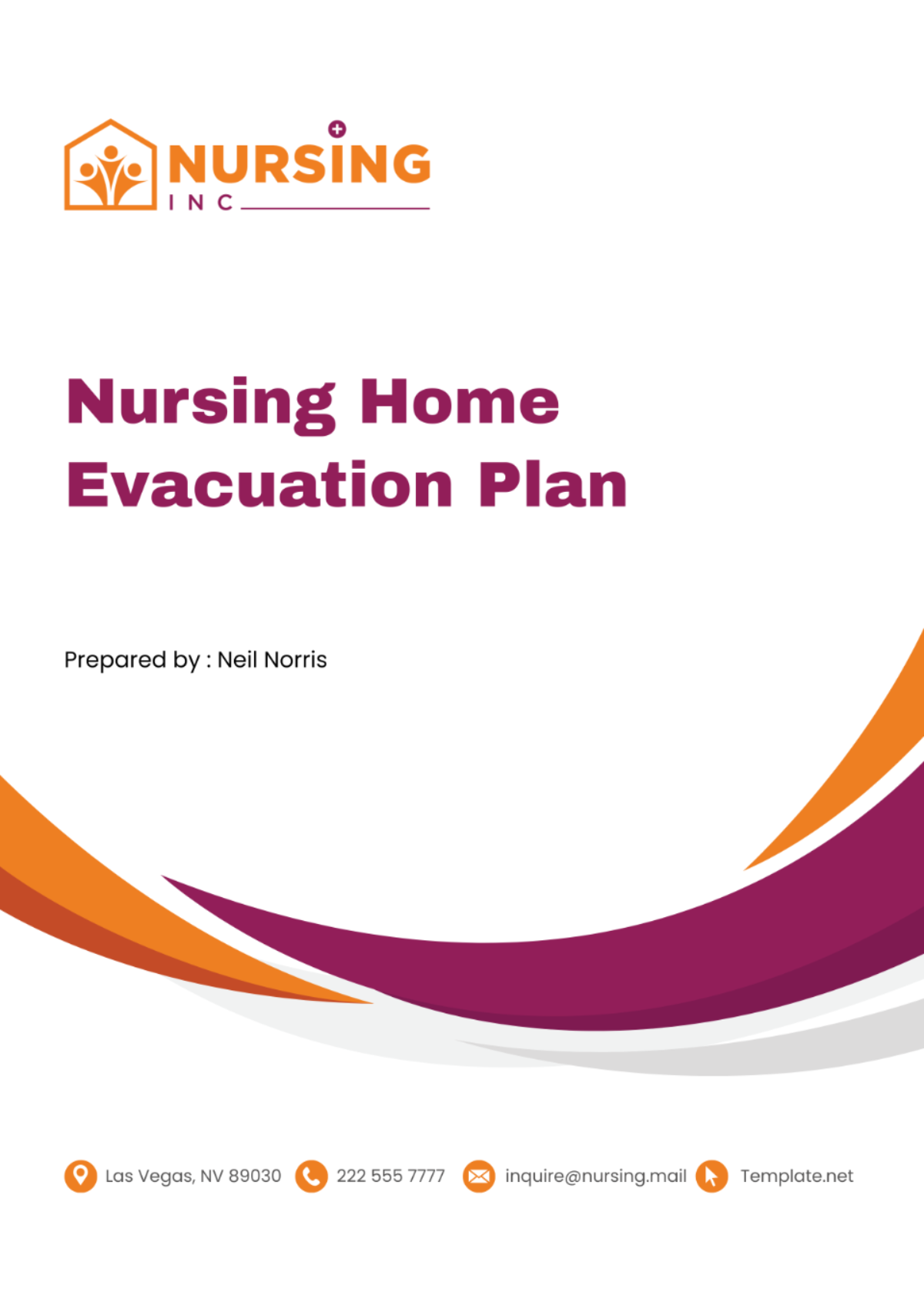
A. Introduction and Purpose
In the face of unforeseen emergencies, ensuring the safety and well-being of residents in nursing homes is paramount. This comprehensive evacuation plan is meticulously crafted to provide clear and decisive guidelines for swift and protective evacuation procedures during times of crisis. With a primary emphasis on the safety and security of every resident, our goal is to execute efficient evacuation strategies that mitigate risks and guarantee the seamless transition of individuals to designated safe locations. By prioritizing proactive measures and preparedness, we aim to minimize the potential hazards associated with emergency mobility, safeguarding the vulnerable members of our community with diligence and compassion.
B. Emergency Response Team
The successful execution of this plan requires an efficient Emergency Response Team (ERT). The roles and responsibilities encompassing the ERT include leading evacuation drills, coordinating with external emergency responders and ensuring clear communication throughout. The team will consist of personnel with exceptional organizational and management skills to ensure streamlined execution of all procedures.
Emergency Response Team Responsibilities
Role | Responsibility |
|---|---|
Team Leader | Directs evacuation, takes critical decisions |
Communication Officer | Alerts staff/residents, maintains family and agency contact |
First Aid Coordinator | Addresses immediate medical needs |
Transport Coordinator | Arranges and manages evacuation transport |
Facility Manager | Assesses damage, manages facility after evacuation |
C. Evacuation Procedures
In any emergency situation, the ability to swiftly and efficiently evacuate residents is paramount to minimizing harm and ensuring their safety. Our evacuation procedures are meticulously designed to prioritize the well-being of every individual within our care. We are committed to initiating evacuation promptly upon detecting credible threats, with a special focus on assisting those with mobility challenges. Ensuring quick and safe boarding onto transportation and facilitating transportation to designated safe zones are integral aspects of our evacuation process. Each step is executed with careful consideration of the unique needs and circumstances of every resident, ensuring a comprehensive and effective response to emergencies.

Threat Assessment and Activation: Upon detecting credible threats such as natural disasters, fires, or other emergencies, designated personnel will assess the situation and activate the evacuation plan. This may involve monitoring weather alerts, fire alarms, or communication from local authorities to determine the need for evacuation.
Alerting and Assisting Residents: Staff members will immediately alert residents of the need to evacuate using clear and concise communication methods. Special attention will be given to residents with mobility challenges or special needs, providing assistance as necessary to ensure their safe and timely evacuation.
Safeboarding and Transportation: Residents will be directed to designated assembly points or evacuation areas within the facility. Staff members will facilitate the safeboarding of residents onto evacuation vehicles, ensuring proper seating arrangements and adherence to safety protocols during transport.
Route Planning and Coordination: Pre-established evacuation routes will be followed to transport residents to designated safe zones or evacuation centers. Staff members will coordinate with local authorities, emergency services, and transportation providers to ensure a clear and efficient evacuation route, avoiding potential hazards or obstacles along the way.
Accounting for Residents: A systematic process will be implemented to account for all residents throughout the evacuation process. Staff members will maintain accurate records of resident movements, conducting regular headcounts and cross-referencing with resident rosters to ensure no one is left behind or unaccounted for during evacuation.
Reception and Reassessment: Upon arrival at the designated safe zones or evacuation centers, staff members will facilitate the reception and reassessment of residents. Medical assessments will be conducted as needed, and residents will be provided with necessary support and assistance to ensure their comfort and well-being in the temporary shelter.
D. Communication Plan
Effective communication is fundamental to successful evacuation management. Our communication plan outlines comprehensive strategies for disseminating crucial information to staff, residents, families, and external agencies in a timely and clear manner.
Internal Communication
a. Alert Notification: Upon detection of an emergency situation requiring evacuation, alerts will be promptly disseminated to all staff members through various channels, including intercom announcements and mobile alerts.
b. Staff Updates: Regular updates will be provided to staff members throughout the evacuation process to ensure they remain informed and prepared to execute their roles effectively.
c. Training and Familiarization: Staff members will receive training on communication protocols and procedures during emergencies, including the proper use of communication devices and channels.
Resident Communication
a. Alert Notification: Residents will be promptly alerted of the need for evacuation through intercom announcements and other accessible means of communication within the facility.
b. Assistance and Reassurance: Staff members will provide assistance and reassurance to residents, guiding them through the evacuation process and addressing any concerns or questions they may have.
c. Clear Instructions: Clear and concise instructions will be provided to residents regarding evacuation procedures, assembly points, and transportation arrangements.
External Communication
a. Family Liaison: Ongoing communication with families will be maintained throughout the evacuation process to provide updates on the status and safety of their loved ones.
b. Coordination with External Agencies: Liaison with local authorities, emergency services, and transportation providers will be established to coordinate evacuation efforts and access additional resources if needed.
c. Public Information: Public information regarding the evacuation status and procedures will be disseminated through designated helpline numbers, website updates, and press releases to keep the community informed.
E. Medical Needs and Special Considerations
Ensuring the safety and well-being of residents with specific medical needs or limited mobility is a top priority in our evacuation planning process. Our comprehensive procedures are meticulously designed to address the unique requirements of these individuals, encompassing the provision of medical care, specialized transportation, and access to necessary equipment throughout the evacuation process.
Medical Assessment and Documentation
a. Initial Assessment: Upon admission to the facility, residents undergo a thorough medical assessment to identify any specific medical needs or mobility limitations.
b. Documentation: Medical records are regularly updated to ensure accurate documentation of residents' medical conditions, medications, and any specialized equipment requirements.
Evacuation Preparation
a. Individualized Plans: Individualized evacuation plans are developed for residents with specific medical needs, outlining procedures for their safe evacuation.
b. Equipment Readiness: Specialized medical equipment, such as oxygen tanks, ventilators, or mobility aids, are regularly inspected and maintained to ensure they are fully operational during emergencies.
Medical Care During Evacuation
a. Trained Personnel: Staff members undergo specialized training to provide medical care and assistance to residents with specific medical needs during the evacuation process.
b. Medication Management: Procedures are in place to ensure the timely administration of medications to residents with chronic conditions or medical dependencies.
Transportation and Accessibility
a. Accessible Vehicles: Evacuation vehicles are equipped to accommodate residents with mobility challenges, including wheelchair-accessible transportation options.
b. Priority Boarding: Residents with specific medical needs are given priority boarding onto evacuation vehicles to ensure their timely and safe transport.
Communication and Coordination
a. Communication with Healthcare Providers: Liaison with healthcare providers and medical professionals is maintained to ensure continuity of care and access to medical support during evacuation.
b. Coordination with Emergency Services: Collaboration with emergency services and medical response teams facilitates seamless coordination for the transportation and care of residents with specific medical needs.
F. Training and Drills
Comprehensive preparedness for emergencies is achieved through rigorous training and regular drills for all staff members involved in the evacuation process. Our training program encompasses essential emergency protocols, resident evacuation techniques, and the proper use of evacuation equipment, ensuring that our team is equipped to handle any crisis situation effectively.
Emergency Training Program
a. Mandatory Training Sessions: All staff members directly involved in the evacuation process are required to undergo comprehensive training sessions on emergency protocols and procedures.
b. Topics Covered: Training modules include but are not limited to, identifying emergency situations, initiating evacuation procedures, assessing resident needs, and coordinating with external agencies.
Evacuation Techniques
a. Resident Assistance: Staff members receive training on safe and efficient techniques for assisting residents with mobility challenges during evacuation, including proper lifting and transfer methods.
b. Communication Skills: Training emphasizes effective communication strategies for providing clear instructions and reassurance to residents during evacuation.
Equipment Familiarization
a. Hands-On Training: Staff members are trained in the proper use of evacuation equipment such as evacuation chairs, mobility aids, and personal protective equipment (PPE).
b. Equipment Maintenance: Training includes guidelines for inspecting and maintaining evacuation equipment to ensure functionality and safety during emergencies.
Regular Evacuation Drills
a. Scheduled Drills: Evacuation drills are conducted regularly as part of our ongoing preparedness efforts, with scheduled sessions held at least twice a year.
b. Realistic Scenarios: Drills simulate realistic emergency scenarios to test staff response and decision-making under pressure, providing valuable learning experiences.
c. Evaluation and Feedback: After each drill, debriefing sessions are held to evaluate performance, identify areas for improvement, and provide constructive feedback to staff members.
Continuous Improvement
a. Refresher Training: Periodic refresher training sessions are conducted to reinforce emergency procedures and update staff on any changes to the evacuation plan.
b. Learning from Experience: Lessons learned from past evacuation drills and real-life emergency situations are incorporated into future training sessions to enhance preparedness and response capabilities.
G. Recovery and Post-Evacuation Procedures
Following the successful evacuation of residents, the focus shifts to post-evacuation recovery to restore normalcy and ensure the well-being of residents and staff members. Our procedures encompass a systematic approach to assess the aftermath, address any facility damage, and provide comprehensive support to all individuals involved, with the ultimate goal of resuming operations safely and swiftly.

Assessment and Evaluation
Conduct thorough assessments of the facility and surrounding area to identify any damage or hazards resulting from the emergency.
Facility Restoration
Initiate necessary repairs and restoration efforts to address any structural damage or safety concerns within the facility.
Resident Reintegration
Facilitate the safe return of residents to their respective living areas, ensuring accommodations are ready and suitable for occupancy.
Staff Support
Provide emotional support and counseling services to staff members who may have experienced stress or trauma during the evacuation and recovery process.
Community Engagement
Engage with the local community and relevant stakeholders to provide updates on the status of the facility and any ongoing recovery efforts.
Continuous Monitoring
Implement measures for ongoing monitoring and evaluation of the recovery process, making adjustments as necessary to ensure the continued safety and well-being of residents and staff members.
G. Designated Evacuation Sites
In the event of an emergency requiring evacuation, residents will be directed to pre-determined safe zones selected based on their accessibility, capacity, and available facilities. These designated evacuation sites have been carefully chosen to ensure the safety and well-being of all individuals involved.
Site Selection Criteria
Accessibility: Sites are easily accessible by emergency vehicles and capable of accommodating transportation needs.
Capacity: Evacuation sites have sufficient capacity to accommodate all residents and staff members safely.
Facilities: Sites are equipped with necessary facilities such as restrooms, shelter, and medical support services.
Availability and Accessibility
The list of designated evacuation sites will be readily available to all staff members and residents for quick reference during emergencies.
Clear signage and communication channels will be established to direct individuals to the nearest evacuation site in a timely manner.
H. Emergency Equipment and Supplies
Ensuring the presence of appropriate emergency equipment and supplies is a critical element towards the success of any evacuation. It becomes especially significant in the context of a nursing home where the well-being and safety of the residents is the top-most priority. To best prepare for any possible evacuation situations, the nursing home will maintain and regularly inspect an ample and pre-packaged supply of emergency provisions. These will include, but not limited to, medical kits that contain requisite medical equipment and medicine, an adequate quantity of food and water to sustain the residents throughout the period of evacuation, and necessary sanitation items for maintaining hygiene standards. In any evacuation scenario, these provisions are set aside, ready to be transported along with the residents, which can indeed contribute significantly to boosting the chances of a successful evacuation, maximizing safety and minimizing disruption.
I. Plan Review and Update
This plan is designed with a long-term outlook in mind and recognizes that changes in staff, residents, or facilities can occur at any point, which may necessitate a review and update. Hence, there will be periodic reviews and updates to the plan to accommodate any such changes that may have happened over time. Additionally, we understand the importance of introspection and continual improvement. To ensure this, after every evacuation, there will be post-event reviews. These reviews are a critical part of the process as they will help identify any potential areas of improvement, thereby enabling us to continually refine and improve the plan and make it as effective and efficient as possible.
- 100% Customizable, free editor
- Access 1 Million+ Templates, photo’s & graphics
- Download or share as a template
- Click and replace photos, graphics, text, backgrounds
- Resize, crop, AI write & more
- Access advanced editor
Prepare for emergencies with the Nursing Home Evacuation Plan Template from Template.net. This editable and customizable template details procedures for safely evacuating residents and staff during emergencies, ensuring everyone's well-being. Editable in our Ai Editor Tool, it's crucial for comprehensive planning, clear communication, and effective execution of evacuation strategies in your nursing home.
You may also like
- Finance Plan
- Construction Plan
- Sales Plan
- Development Plan
- Career Plan
- Budget Plan
- HR Plan
- Education Plan
- Transition Plan
- Work Plan
- Training Plan
- Communication Plan
- Operation Plan
- Health And Safety Plan
- Strategy Plan
- Professional Development Plan
- Advertising Plan
- Risk Management Plan
- Restaurant Plan
- School Plan
- Nursing Home Patient Care Plan
- Nursing Care Plan
- Plan Event
- Startup Plan
- Social Media Plan
- Staffing Plan
- Annual Plan
- Content Plan
- Payment Plan
- Implementation Plan
- Hotel Plan
- Workout Plan
- Accounting Plan
- Campaign Plan
- Essay Plan
- 30 60 90 Day Plan
- Research Plan
- Recruitment Plan
- 90 Day Plan
- Quarterly Plan
- Emergency Plan
- 5 Year Plan
- Gym Plan
- Personal Plan
- IT and Software Plan
- Treatment Plan
- Real Estate Plan
- Law Firm Plan
- Healthcare Plan
- Improvement Plan
- Media Plan
- 5 Year Business Plan
- Learning Plan
- Marketing Campaign Plan
- Travel Agency Plan
- Cleaning Services Plan
- Interior Design Plan
- Performance Plan
- PR Plan
- Birth Plan
- Life Plan
- SEO Plan
- Disaster Recovery Plan
- Continuity Plan
- Launch Plan
- Legal Plan
- Behavior Plan
- Performance Improvement Plan
- Salon Plan
- Security Plan
- Security Management Plan
- Employee Development Plan
- Quality Plan
- Service Improvement Plan
- Growth Plan
- Incident Response Plan
- Basketball Plan
- Emergency Action Plan
- Product Launch Plan
- Spa Plan
- Employee Training Plan
- Data Analysis Plan
- Employee Action Plan
- Territory Plan
- Audit Plan
- Classroom Plan
- Activity Plan
- Parenting Plan
- Care Plan
- Project Execution Plan
- Exercise Plan
- Internship Plan
- Software Development Plan
- Continuous Improvement Plan
- Leave Plan
- 90 Day Sales Plan
- Advertising Agency Plan
- Employee Transition Plan
- Smart Action Plan
- Workplace Safety Plan
- Behavior Change Plan
- Contingency Plan
- Continuity of Operations Plan
- Health Plan
- Quality Control Plan
- Self Plan
- Sports Development Plan
- Change Management Plan
- Ecommerce Plan
- Personal Financial Plan
- Process Improvement Plan
- 30-60-90 Day Sales Plan
- Crisis Management Plan
- Engagement Plan
- Execution Plan
- Pandemic Plan
- Quality Assurance Plan
- Service Continuity Plan
- Agile Project Plan
- Fundraising Plan
- Job Transition Plan
- Asset Maintenance Plan
- Maintenance Plan
- Software Test Plan
- Staff Training and Development Plan
- 3 Year Plan
- Brand Activation Plan
- Release Plan
- Resource Plan
- Risk Mitigation Plan
- Teacher Plan
- 30 60 90 Day Plan for New Manager
- Food Safety Plan
- Food Truck Plan
- Hiring Plan
- Quality Management Plan
- Wellness Plan
- Behavior Intervention Plan
- Bonus Plan
- Investment Plan
- Maternity Leave Plan
- Pandemic Response Plan
- Succession Planning
- Coaching Plan
- Configuration Management Plan
- Remote Work Plan
- Self Care Plan
- Teaching Plan
- 100-Day Plan
- HACCP Plan
- Student Plan
- Sustainability Plan
- 30 60 90 Day Plan for Interview
- Access Plan
- Site Specific Safety Plan
